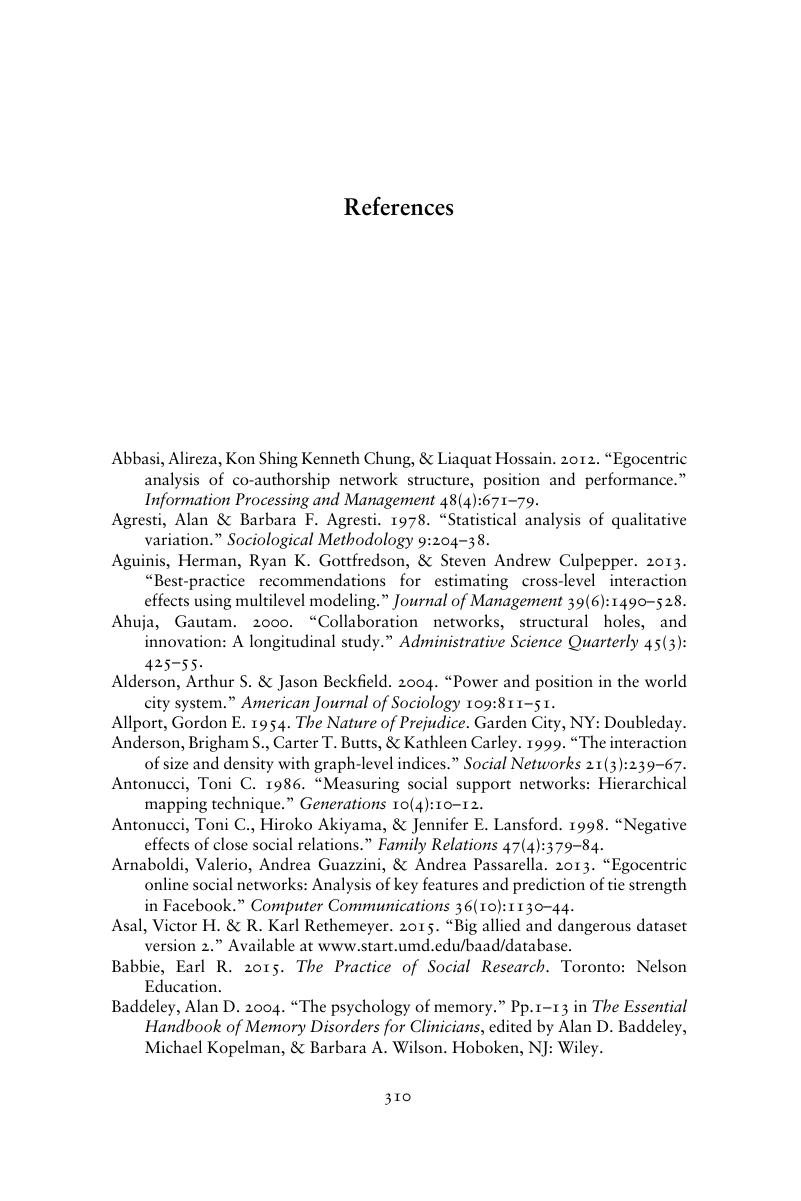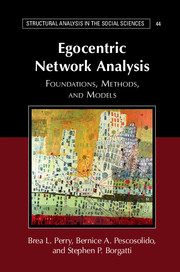Book contents
- Egocentric Network Analysis
- Structural Analysis in the Social Sciences
- Egocentric Network Analysis
- Copyright page
- Dedication
- Contents
- Figures
- Tables
- Preface
- Part I Theoretical and Methodological Foundations
- Part II Research Design for Ego Networks
- Part III Analyzing Ego Networks
- References
- Index
- References
References
Published online by Cambridge University Press: 27 February 2018
- Egocentric Network Analysis
- Structural Analysis in the Social Sciences
- Egocentric Network Analysis
- Copyright page
- Dedication
- Contents
- Figures
- Tables
- Preface
- Part I Theoretical and Methodological Foundations
- Part II Research Design for Ego Networks
- Part III Analyzing Ego Networks
- References
- Index
- References
Summary

- Type
- Chapter
- Information
- Egocentric Network AnalysisFoundations, Methods, and Models, pp. 310 - 340Publisher: Cambridge University PressPrint publication year: 2018

